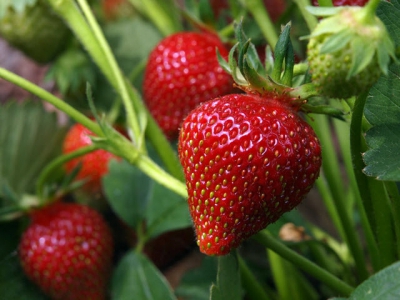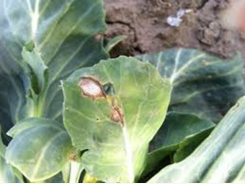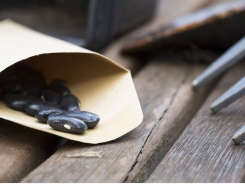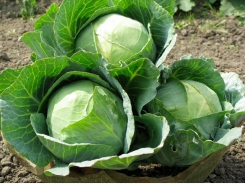Growing and Caring for Organic Strawberries

Store-bought strawberries: they’re not cheap, especially the organic ones, and they’re often not very good. Both those attributes are related to the fact that strawberries are among the most perishable of produce. It’s a fruit that should be picked when perfectly ripe meaning the fruit is soft and aromatic but a perfectly ripe strawberry becomes a rotten strawberry very quickly when placed in a plastic clamshell and shipped around the country. Hence the half-ripe berries, stiff and bland, that you find at the supermarket.
Strawberries are so much better when homegrown because they can be picked at perfect ripeness. Photo By Burkhard Trautsch / shutterstock
Strawberries have a reputation of being difficult to grow, especially organically, though that’s only true if you don’t know the tricks. Their beauty is that they are perennial: plant them once, and they produce year after year—for at least a few years, anyways. Your original “mother” plants will produce many “daughters,” so once you have a bed established, you never need to buy more.
Sourcing Strawberry Plants
It is possible to grow strawberries from seed, but few people do because germination is poor and it takes a couple years for the plants to get up to size and start producing fruit. Potted strawberries are often available in nurseries, though this, too, has a drawback: molded in the shape of the pot, the roots don’t spread out laterally after being plunked in the ground, which is how these shallow-rooted plants grow best.
However, give that it’s already July, that may be your best option. But keep this in mind for next season: The best way to start strawberries is “bare root”—that is without soil, while dormant. This means planting them in late winter, which gives them ample time to get established before hot weather hits. You’ll find that bare root strawberry plants are much cheaper than potted ones. If your local nursery doesn’t stock them, plenty of online nurseries would be happy to ship some to you. The recommended planting window is approximately 4 to 6 weeks before the average date of last frost in your area.
Where to Plant Them
Choose a site with a minimum of six hours of direct sun. One key to growing strawberries successfully is well-drained soil. An easy way to achieve this is to grow them in pots or raised wooden beds. If you are growing them in the ground, till a two-inch layer of compost into the soil and sculpt it into raised planting mounds to ensure adequate drainage.
Rule of Thumb: Only allow three daughter plants to grow from each mother.
How to Plant Them
Bare root strawberry plants consist of a small root “crown” at the top this where the leaves will emerge with hair-like roots dangling below. Dig a hole as deep as the roots are long, then form a cone of soil inside the hole. Splay the roots evenly around the cone and cover them with soil, filling the hole; the base of the crown should be even with the surrounding soil level. It’s very important to not bury the crown, as this will lead to fungal problems. Plant them 18 to 24 inches apart.
Potted strawberry plants require about 2 gallons of soil. They are an excellent candidate for hanging baskets, as the “daughter” plants, attached to their mother with runners (little vines), will cascade gracefully over the edges. There are even special strawberry planters designed for the purpose.
Organic Strawberry Plant Care
Here are the key things to pay attention to throughout the growing season.
Water frequently: Strawberry plants are sensitive to waterlogging, but they also don’t like to dry out. Irrigate whenever the top ½ to 1 inch of soil is dry.
Fertilize every four to six weeks: Choose an organic fertilizer with more phosphorus than nitrogen, as this will stimulate fruit production. That means the second number on the bag should be bigger than the first (like this one).
Cut off most of the runners: Most strawberry varieties produce little vines with baby strawberry plants at the end of them. Only allow three of these daughter plants to grow from each mother, clipping off the others as they appear, to prevent overcrowding.
Monitor for snail and slug damage: These are typically the most problematic pests in backyard strawberry plantings. Check out our comprehensive guide to deterring them with organic methods here.
Prepare the plants for winter: The plants will begin to die back with the first frost in fall. At this point, cut the vegetation back to the root crown, spread a ½-inch layer of compost around the plants, and cover the beds with several inches of straw or leaves as a winter mulch (remove the mulch in spring).
Pro Tips
Here are a few other things you can do to ensure healthy plants and abundant crops, while minimizing your labor.
Cover the beds with weed fabric: Not only does this control weed growth, it discourages slugs and snails, and keeps the fruit from contacting the soil, preventing premature rot. Install the fabric immediately after planting, cutting small holes in it for each root crown to poke through.
Pinch off the flowers that appear after planting in spring: Strawberry plants tend to be healthier if you encourage the roots and foliage to become established before they start directing their energy toward flowers and fruit. This is necessary only the first spring after planting
Rotate your strawberry beds every few years: After a few years, strawberry production slows and the plants often become infested with pests and disease. Rather than ripping them out and planting again in the same place, replant in another location where the particular pests and disease that attack strawberries are not as prevalent.
Transplant daughter plants in a new bed: There is no need to procure new strawberry plants when you have a steady supply of daughter plants with which to establish new plantings.
Recommended Strawberry Varieties
Strawberries are divided into two main categories. Here are a few recommendations for each. Heirloom varieties are indicated with an ‘H’.
June-Bearing: Most of the berries are produced in a three-week period in late spring or early summer with this type of strawberry. Examples include Cabot, Clancy, Old North Sea (H), Jewel, Sparkle, Honeoye (H), Sequoia, Allstar, Surecrop, Earliglow (H), and Scarlet (H).
Everbearing: These varieties produce sporadically throughout the growing season, with the biggest crop in spring. They are also referred to as day-neutral strawberries. Examples include Fragola di Bosco (H), Eversweet, Ozark Beauty, Mignonette (H), Tribute, Tristar, Yellow Wonder (H), and Wonderful Pine.
Có thể bạn quan tâm
Phần mềm

Phối trộn thức ăn chăn nuôi

Pha dung dịch thủy canh

Định mức cho tôm ăn

Phối trộn phân bón NPK

Xác định tỷ lệ tôm sống

Chuyển đổi đơn vị phân bón

Xác định công suất sục khí

Chuyển đổi đơn vị tôm

Tính diện tích nhà kính

Tính thể tích ao hồ




 Sclerotinia strikes!
Sclerotinia strikes!  Safeguarding soil fertility to cabbage maturity
Safeguarding soil fertility to cabbage maturity